Biocontrol Agents
Neoseiulus cucumeris
Description
- N. cucumeris (figure 1) looks similar to a number of other predatory mites such as Amblyseius swirskii, A. californicus, A. andersoni and A. fallacis. They are not readily distinguished from each other and identification requires an experienced taxonomist.
- Adults have 8 legs and are about 0.4 mm long and tan coloured. The eggs (which are oval and clear) are usually laid individually on the underside of leaves on leaf hairs, often close to the junction of main veins (figure 2). Larvae have 6-legs, are much paler in colour, and are very difficult to see with the naked eye (figure 3). Later immature stages (the protonymph and deutonymph) have 8 legs.
-

-
Figure 1
-
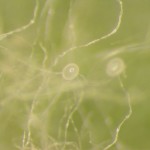
-
Figure 2
-
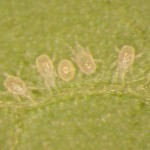
-
Figure 3
Biology
- At 25oC, an adult female cucumeris can consume up to 6 first instar western flower thrips/day, though average consumption is likely to be lower. It will only feed on the first larval stage but its searching behaviour can distress older WFT larvae, resulting in increased larval mortality (by over 50%). N. cucumeris will lay eggs at a rate of approximately one or two per day. The average development time (egg-adult) at 25oC is about 7.6 days when fed on western flower thrips larvae1 and 5.9-8.2 days on a diet of pollen from different plant species.
- Because cucumeris feeds only on the first larval stage, it can take 4-6 weeks for control to be evident, longer if thrips were well-established before N. cucumeris was introduced.
Recommendations for Use
Packaging
- N. cucumeris is mass-produced by using another mite (the bran or mould mite, Tyrophagus putrescantiae , which feeds on bran) as food.
- N. cucumeris is packaged in a number of different ways:
- Bulk Product: mites are sold in quantities between 25,000 and 250,000 by different producers. All life stages are mixed with the food mite and bran or vermiculite (figure 4). Bulk products are designed to be broadcast throughout the crop.
- Regular slow release breeding sachets. These sachets (figure 5) contain mites of all life stages mixed with bran and a food mite at high ratios (e.g. 1 predator to about 10 food mites). The food mite acts as a long term, alternative food source for the predator, allowing it to breed within the sachet over several weeks. A small hole in the sachet allows the predatory mites to exit and move into the crop. These sachets usually contain about 1000 predators, but producing up to 5,000 over about a 6 week period
- Mini slow-release sachets: These have a lower starting population of predators (100-250), but a price point 60-70% lower than the larger size. These are mainly used in the ornamental industry, enabling growers to use slow-release sachets more economically in hanging baskets (figure 6) and potted plant production (figure 7).
- Double sachet: Known as a Gemini pack and produced by Syngenta BioLine. This product can be folded in half and hung over wires or plant branches (figure 8).
- Continuous sachets: Also produced by Syngenta BioLine (as BugLine), this is a continuous length of sachets joined by perforations allowing for easy tearing. However, only 1 of every 3 sachets actually contains predatory mites. It is used for easy application in flower crops such as gerbera, where it can be laid along the length of crop row, with the empty sachets in the line acting as a bridge for the predatory mites to disperse the full length of the row (figures 9a and 9b).
- Refer to the Grower Guide: quality assurance of biocontrol products for methods to determine the quality of the N. cucumeris at receipt at the greenhouse
Distribution Techniques
- Bulk product can be broadcast in a number of different ways. However it is done, it should be thoroughly mixed first according to the suppliers’ instructions to ensure even distribution within the medium in which it is shipped.
- It can be manually sprinkled on the crop. The advantage of this is that it is very simple to do, however, it can be difficult to ensure even and consistent distribution.
- There are mechanical blowers/spreaders (figures 10a and 10b) that provide more even distribution. Some of these are sold or provided by the manufacturer and some growers have developed their own by modifying devices such as leaf blowers (figures 11a and 11b). However, it should be noted that unless they are carefully tested, home-made spreaders may damage the mites by ripping their legs off or crushing them, or not provide the evenness of distribution hoped for.
- Slow-release sachets should be hung on plants out of the direct sun, to prevent high temperatures from killing the mites inside. When possible, sachets should also be hung well within the plant canopy to provide a more humid environment (low humidity reduces the number of mites that emerge from the sachets). Sachets should not be in direct contact with water, however, some packaging is water resistant. Again, follow instructions carefully.
- Some slow-release sachets are being produced with a small stake glued to the packaging that can be inserted into the growing medium, while keeping the sachet from touching the media itself. The stake makes distribution easier in some crops. For example, this is useful in young transplants which are not strong enough to support the weight of a sachet. (link to http://www.biobestgroup.com/en/biobest/products/biological-control-4463/beneficial-insects-and-mites-4479/abs-mini-7569/ )
- Movement of predatory mites between plants is limited when the foliage of adjacent plants is not touching; Choose the right release method (i.e. broadcast, sachets) to ensure there are predators on all plants.
Introduction rates
- Recommended rates of the bulk product vary between 20-25 mites/m2 for preventative use to 100/m2 for curative. However, most growers will apply at 100/m2 whenever they use it, no matter what size thrips population they have.
- General recommended distribution rates for slow release sachets are 1 sachet/ 2-2.5 m2 for preventative or light infestations, and up to 1/m2 for heavier infestations.
- In ornamental hanging baskets, recommended rates of Mini-sachets are 1-2 per basket (depending on the size of the basket and the susceptibility of the plant material to thrips).
- In potted ornamental plants, mini-sachets are often applied at 1 per pot (15 cm pot size). They are usually introduced when the crop is in final spacing.
- In vegetables, sachets are the most common method of release. The rate used depends on crop and existing infestation levels. Bulk material is often used to supplement the sachets when a more rapid reduction in thrips populations is desired.
Environmental considerations
- N.cucumeris will not perform as well under very high temperatures (>32ºC) or under very dry conditions (although it is more tolerant of low humidity than some other predatory mites). Adults are more tolerant of adverse conditions than immature stages.
- Slow release sachets that are exposed to high temperatures and/or low humidity levels will produce less predators and will not last as long.
- Recent work has compared the efficacy of N.cucumeris and A. swirskii under summer and winter conditions (link to Environmental factors affecting…)
Monitoring
- Look for the mites in the product as it is shipped (use a hand lens), to gain a better understanding of what the mites look like, what the feeder mites look like in comparison, and also to make sure that the mites are alive and healthy when they arrive (figure 12).
- Monitoring for the presence of cucumeris requires some practice and good eyesight. The mites are very small, but with practice they can be observed in areas of thrips infestation and close to release points. It can be helpful to look for motion, rather than looking for the shape of a mite.
- Tap plants or flowers over white paper or a white tray (figure 13) and examine for presence of predatory mites. Mites should scurry across the surface of the tray when disturbed.
- Take a few sachets from the crop and open them to see if they are still producing predatory mites.
Crop considerations
- N.cucumeris was originally developed for use in vegetable crops. The higher tolerance for the presence of thrips in vegetables, allows for less aggressive release rates.
- Its use in ornamentals was adapted from recommendations developed in vegetables. However, as growers have gathered more experience with it, and because of the lower tolerance for thrips and damage, a more intensive program is usually used. Bulk product is used early, often in propagation or when the crop is pot tight. Under these conditions, environmental conditions are optimal for survival and development of the predators. As the crop grows and is spaced, or in crops such as cut flowers or hanging baskets, slow-release mini-sachets are often used at much higher densities than in vegetables, providing higher numbers of predators over the life of the sachet than could be achieved by spreading bulk product.
Other considerations
- N. cucumeris is often used in conjunction with other BCAs. For example, because it is considerably less expensive than A. swirskii, they are often used in combination to reduce the cost for thrips control. Interactions between these two predators have been demonstrated under lab and research greenhouse conditions, with reports of the two species preying on each other, and another report of A. swirskii eliminating a population of N. cucumeris. It should be noted however, that these interactions have not yet been demonstrated under commercial greenhouse conditions. Link to compatibility of using different predatory mites
-
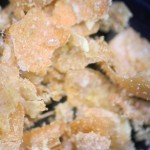
-
Figure 4
-
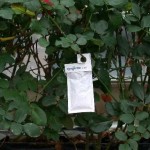
-
Figure 5
-

-
Figure 6
-

-
Figure 7
-
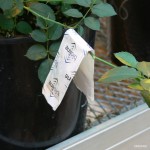
-
Figure 8
-
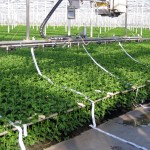
-
Figure 9a
-
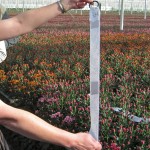
-
Figure 9b
-
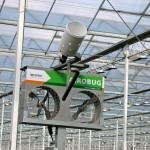
-
Figure 10a
-

-
Figure 10b
-
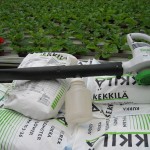
-
Figure 11a
-
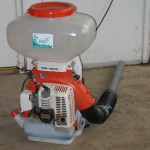
-
Figure 11b
-
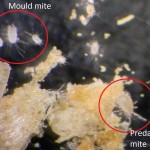
-
Figure 12
-
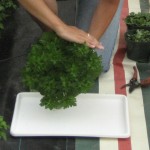
-
Figure 13
References
- Buitenhuis, R., Shipp, J. L., Scott-Dupree, C. 2010: Intra-guild vs extra-guild prey: effect on predator fitness and preference of Amblyseius swirskii (Athias-Henriot) and Neoseiulus cucumeris (Oudemans) (Acari: Phytoseiidae). Bulletin of Entomological Research 100: 167-173.
- Jandricic, S.J., Schmidt, D., Bryant, G. and Frank, S.D. Publication in preparation.
- Ranabhat, N.B., Goleva, I., Zebitz, C.P.W. 2014. “Life tables of Neoseiulus cucumeris exclusively fed with seven different pollens.”Biocontrol 59: 195-203
- Buitenhuis, R., Glemser, E., Brommit, A. 2014. Practical placement improves the performance of slow release sachets of Neoseiulus cucumeris. Biocontrol Science and Technology 24: 1153-1166.
- Buitenhuis, R., Shipp, J. L., Scott-Dupree, C. 2010: Dispersal of Amblyseius swirskii Athias-Henriot (Acari: Phytoseiidae) on potted greenhouse chrysanthemum. Biological Control 52: 110-114.
- Shipp, J.L., van Houten, Y.M., 1997. Influence of temperature and vapor pressure deficit on survival of the predatory mite Amblyseius cucumeris (Acari: Phytoseiidae). Environ Entomol 26:106–113
- Hewitt, L., Shipp, L., Buitenhuis, R., Scott-Dupree, C. 2015: Seasonal climatic variations influence the efficacy of predatory mites used for control of western flower thrips in greenhouse ornamental crops. Experimental and Applied Acarology 65: 435-450.
- Messelink, G., van Steenpaal, S. and van Wensveen, W. 2005. Typhlodromips swirskii (Athios-Henriot) (Acari: Phytoseiidae): a new predator for thrips control in greenhouse cucumber. IOBC/wprs Bulletin 28(1): 183-186.
- Cloutier, C., Arodokoun, D., Johnson, S. G., Gélinas, L. 1995: Thermal dependence of Amblyseius cucumeris (Acarina: Phytoseiidae) and Orius insidiosus (Heteroptera: Anthocoridae) in greenhouses. In: Thrips Biology and Management, Parker, B.L., Skinner, Lewis, T., eds.): pp. 231-235. Plenum Press, New York.
Further Reading
- Heinz, K.M., R.G. Van Driesche and M.P. Parrella 2004. Biocontrol in Protected Culture, Ball Publishing, Batavia, Illinois.
- Malais M.H and Ravensberg W.J. 2003. Knowing and Recognizing: The biology of glasshouse pests and their natural enemies. Koppert BV, Berkel en Rodenrijs, The Netherlands and Reed Business Information, Doetinchem, The Netherlands.
















